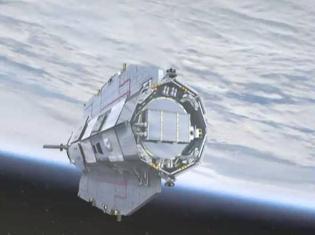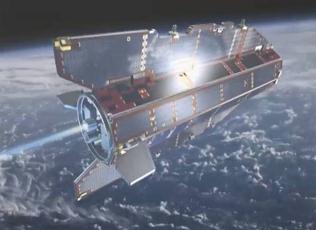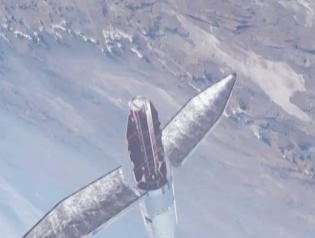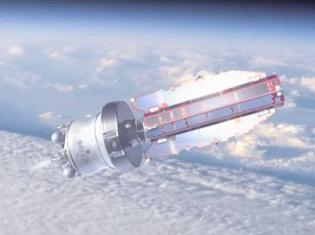ESA is about to launch a satellite capable of measuring very small variations in the Earth’s gravitational field. Even if it is a common-sense assumption that the force of gravity on the surface of the Earth has a constant value, there are subtle variations caused by the rotation of the Earth, the position of the mountains and ocean trenches, and by the variations of the Earth’s inner density. Determining the variations in the Earth’s gravitational field will improve our knowledge of ocean circulation, and will also help to make advances in geodesy and surveying.
The Gravity field and steady-state Ocean Circulation Explorer (GOCE) satellite will measure the small variations of the gravitational field. GOCE is the most advanced gravity space mission to date. Scientists will build a detailed map of Earth’s gravity using data collected by GOCE.
In order to make accurate measurements, the GOCE satellite will orbit in a low altitude orbit, around 250 km above the surface of the Earth.
An elongated shape has been chosen for the satellite design to minimize the atmospheric drag. GOCE is five meters long, one meter in diameter, and has a mass of roughly 1050 kg.
The heart of the GOCE satellite is a scientific instrument called gradiometer. The gradiometer consists of three pairs of accelerometers, and it measures acceleration variations over short distances between proof masses inside the satellite. One important thing to mention here is that the calibration of the gradiometer takes place after launch. The reason? The instrument cannot be calibrated on the ground, under the force of gravity.
You can find out more about the calibration of the GOCE instrument by reading an interesting article on ESA’s website.
Daniel Lamarre, a Canadian national working at ESA’s European Space Research and Technology Centre (ESTEC), is the inventor and the developer of the method used for the calibration of the instrument. He won an ESA award for developing the calibration method.
The GOCE satellite will be launched from the Plesetsk Cosmodrome in northern Russia. Eurockot Launch Services GmbH, a company that provides commercial launch services with the Rockot launch system, will be the launch provider for the GOCE mission. Eurockot was formed in 1993. EADS Astrium, located in Bremen, Germany, holds 51 percent of the company. The Khrunichev State Research and Production Space Center in Moscow, Russia, owns the remaining 49 percent.
The Rockot launcher is based on the SS-19 Intercontinental Ballistic Missiles. The upper stage of the launch system, Breeze KM, extends the performance capabilities of the Rockot lower stages. The system is capable of injecting a 1950 kg payload into Low Earth Orbit (LEO). The re-ignitable main engine of the Breeze KM allows various injection schemes for the payload. The length of the launch vehicle is 29 meters, with a launch mass of 107 tons. The external diameter of the three stages is 2.5 meters, while the payload fairing has an external diameter of 2.6 meters and a height of 6.7 meters.
The initial launch date was postponed due to an anomaly identified in the guidance and navigation subsystem of the Breeze KM upper stage. The new launch date has been scheduled for Monday, October 27th, 2008.













 Subscribe to our RSS feed
Subscribe to our RSS feed











There are no comments.
Add A Comment